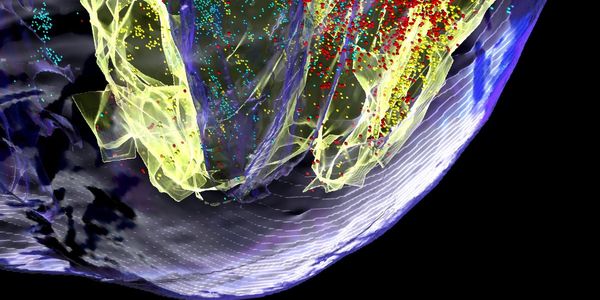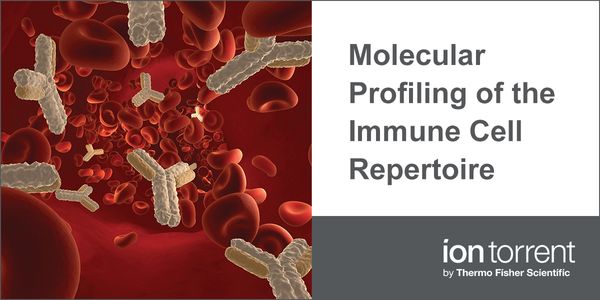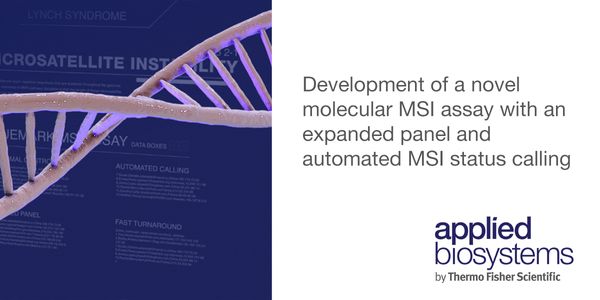Human development
Human development describes the stages of human life. Human development consists of 5 stages. Infancy (up to one year), toddler (age 1 - 5), childhood (age 3 - 11), adolescence (age 12 - 18), and adulthood. The study of human development aims to understand how people grow, develop, and change throughout their life.
-
JUN 02, 2020 | 1:30 PMRecent advances in high-throughput single-cell transcriptomics and epigenomics methods allow to measure the expression of thousands of genes and identify the gene transcriptional regulation...Speaker: Organizer(s): Yong YaoJUN 02, 2020 | 10:30 AM...Speaker: Plenary Keynote: Edward Chang, MDMAY 28, 2020 | 9:00 AMDATE: May 28, 2020 TIME: 9:00am PDT High-resolution imaging of sentinel lymph nodes (SLN) is gaining significance to specify staging and to determine patients requiring adjuvant treatment. C...MAY 28, 2020 | 9:00 AMA recently proposed model for the incorporation of xenobiotics of clinical and forensic interest into the human skeleton suggests nerve agent metabolites may incorporate into bone at relativ...Speaker: Timothy Garrett, PhDMAY 20, 2020 | 11:15 AMMetastatic prostate cancer (mPC) is a phenotypically diverse disease with poor responses to immune based therapeutics. Development of immunotherapeutic strategies for mPC is hampered by the...MAY 20, 2020 | 7:30 AMPrecision medicine is the paradigm to develop treatments for patients based on molecular-targets that are effective in vivo when administered. In addition to identifying the molecular and ce...MAY 20, 2020 | 12:00 AMThe current gold standard for COVID-19 diagnosis is based on the detection of SARS-CoV-2 nucleic acid using real-time quantitative PCR (RT-qPCR). Recent studies suggest limitations of RT-qPC...MAY 20, 2020 | 12:00 AMThe basic units of biological structure and function are cells, which exhibit wide variation in regard to both type and state. We assess such variation by simultaneously profiling the transc...Speaker: Anindita Basu, PhDMAY 20, 2020 | 12:00 AMTechniques to analyze and sort single cells based on secreted products have the potential to transform our understanding of cellular biology as well as accelerate the development of next gen...Speaker: Joseph de RutteMAY 20, 2020 | 12:00 AMProteins are the functional blocks of any biological entity from 50 nm sized viruses to the 100 ft long mammals (blue whale). They perform intra cellular, tissue, organ, system, or organism...Speaker: Kursad Araz, PhDMAY 14, 2020 | 9:00 AMThe justification of sample size is one of the hardest sections of a proposal an IACUC (ethical review board) has to assess, yet is arguably one of the most important (1). This is a key oppo...Speaker: Joseph Garner, PhD , Brianna Gaskill, PhDPresented at: Laboratory Animal Sciences Virtual Event Series 2020
MAY 14, 2020 | 12:00 AMAnimal welfare is the most important issue in any in vivo laboratory. The ability to detect and intervene in cases where the conditions of animals may be deteriorating as well as the ability...MAY 14, 2020 | 12:00 AMBiomedical research suffers from a translation gap, where most treatments that seem effective when tested on animals turn out not to work in human patients. This is likely due in large part...Speaker: Jamie Ahloy Dallaire, MSc, PhDPresented at: Laboratory Animal Sciences Virtual Event Series 2020
MAY 14, 2020 | 12:00 AMTuberculosis (TB) is the No.1 cause of death due to a single infectious agent in the world today. According to the global report from World Health Organization, one third of world population...MAY 14, 2020 | 12:00 AMExperimental models that promise to replace animal tests that are currently required for drugs and chemicals are rapidly proliferating. This includes a number of novel solutions offered by b...MAY 14, 2020 | 2:40 PMThe development of molecular targeted therapy is one of the breakthroughs in oncology field. Molecular profiling of the tumor becomes mandatory in the routine clinical practice to select the...Speaker: Siew-Kee (Amanda) Low, PhDPresented at: OncomineWorld Autumn: A virtual NGS education meeting
MAY 14, 2020 | 2:40 PMMolecular profiling is key in precision oncology research and whilst the tissue testing has become a routine, liquid biopsy might provide a non-invasive alternative when tissue biopsy is ina...Speaker: Siew-Kee (Amanda) Low, PhDPresented at: OncomineWorld 2022: A Virtual NGS Education Meeting
MAY 12, 2020 | 9:00 AMNEW DATE: Date: May 12, 2020 Time: 9:00am PDT, 12:00pm EDT...MAY 12, 2020 | 8:00 AMDATE: May 12, 2020 TIME: 8:00am PT Idiopathic aplastic anemia (AA) has two key characteristics: an autoimmune response against hematopoietic stem/progenitor cells and regulatory T cells (Tre...MAY 08, 2020 | 10:00 AMDATE: May 8, 2020 TIME: 10:00am PT, 11:00am MT, 1:00pm ET The application of next generation sequencing to interrogate immune repertoires and methods in which these highly complex dataset...MAY 08, 2020 | 8:00 AMDATE: May 8, 2020 TIME: 8:00am PT, 11:00am ET Microsatellite instability (MSI) is the condition of genetic hypermutability that results from impaired DNA mismatch repair (MMR). Studies indic...MAY 07, 2020 | 8:00 AMDATE: May 7, 2020 TIME: 8:00AM PDT, 11:00AM EDT With the recent explosion of cell therapy, we know more about conditions affecting cell growth than ever before. Your CO2 incubator should not...MAY 06, 2020 | 1:00 PMThe forensic investigation of crime involves answering four basic questions: who, what, where, and when. Tools exist to answer questions of who, what and where, but the question when is ofte...MAY 06, 2020 | 9:00 AMCrime scene investigation is more than just processing or documentation of crime scenes, nor is it just the collection or packaging of physical evidence. It is the first step and the most cr...
JUN 02, 2020 | 1:30 PM
Recent advances in high-throughput single-cell transcriptomics and epigenomics methods allow to measure the expression of thousands of genes and identify the gene transcriptional regulation...
Speaker:
Organizer(s): Yong Yao
JUN 02, 2020 | 10:30 AM
...
Speaker:
Plenary Keynote: Edward Chang, MD
MAY 28, 2020 | 9:00 AM
DATE: May 28, 2020 TIME: 9:00am PDT High-resolution imaging of sentinel lymph nodes (SLN) is gaining significance to specify staging and to determine patients requiring adjuvant treatment. C...
MAY 28, 2020 | 9:00 AM
A recently proposed model for the incorporation of xenobiotics of clinical and forensic interest into the human skeleton suggests nerve agent metabolites may incorporate into bone at relativ...
Speaker:
Timothy Garrett, PhD
MAY 20, 2020 | 11:15 AM
Metastatic prostate cancer (mPC) is a phenotypically diverse disease with poor responses to immune based therapeutics. Development of immunotherapeutic strategies for mPC is hampered by the...
MAY 20, 2020 | 7:30 AM
Precision medicine is the paradigm to develop treatments for patients based on molecular-targets that are effective in vivo when administered. In addition to identifying the molecular and ce...
MAY 20, 2020 | 12:00 AM
The current gold standard for COVID-19 diagnosis is based on the detection of SARS-CoV-2 nucleic acid using real-time quantitative PCR (RT-qPCR). Recent studies suggest limitations of RT-qPC...
MAY 20, 2020 | 12:00 AM
The basic units of biological structure and function are cells, which exhibit wide variation in regard to both type and state. We assess such variation by simultaneously profiling the transc...
Speaker:
Anindita Basu, PhD
MAY 20, 2020 | 12:00 AM
Techniques to analyze and sort single cells based on secreted products have the potential to transform our understanding of cellular biology as well as accelerate the development of next gen...
Speaker:
Joseph de Rutte
MAY 20, 2020 | 12:00 AM
Proteins are the functional blocks of any biological entity from 50 nm sized viruses to the 100 ft long mammals (blue whale). They perform intra cellular, tissue, organ, system, or organism...
Speaker:
Kursad Araz, PhD
MAY 14, 2020 | 9:00 AM
The justification of sample size is one of the hardest sections of a proposal an IACUC (ethical review board) has to assess, yet is arguably one of the most important (1). This is a key oppo...
Speaker:
Joseph Garner, PhD
, Brianna Gaskill, PhD
Presented at: Laboratory Animal Sciences Virtual Event Series 2020
MAY 14, 2020 | 12:00 AM
Animal welfare is the most important issue in any in vivo laboratory. The ability to detect and intervene in cases where the conditions of animals may be deteriorating as well as the ability...
MAY 14, 2020 | 12:00 AM
Biomedical research suffers from a translation gap, where most treatments that seem effective when tested on animals turn out not to work in human patients. This is likely due in large part...
Speaker:
Jamie Ahloy Dallaire, MSc, PhD
Presented at: Laboratory Animal Sciences Virtual Event Series 2020
MAY 14, 2020 | 12:00 AM
Tuberculosis (TB) is the No.1 cause of death due to a single infectious agent in the world today. According to the global report from World Health Organization, one third of world population...
MAY 14, 2020 | 12:00 AM
Experimental models that promise to replace animal tests that are currently required for drugs and chemicals are rapidly proliferating. This includes a number of novel solutions offered by b...
MAY 14, 2020 | 2:40 PM
The development of molecular targeted therapy is one of the breakthroughs in oncology field. Molecular profiling of the tumor becomes mandatory in the routine clinical practice to select the...
Speaker:
Siew-Kee (Amanda) Low, PhD
Presented at: OncomineWorld Autumn: A virtual NGS education meeting
MAY 14, 2020 | 2:40 PM
Molecular profiling is key in precision oncology research and whilst the tissue testing has become a routine, liquid biopsy might provide a non-invasive alternative when tissue biopsy is ina...
Speaker:
Siew-Kee (Amanda) Low, PhD
Presented at: OncomineWorld 2022: A Virtual NGS Education Meeting
MAY 12, 2020 | 9:00 AM
NEW DATE: Date: May 12, 2020 Time: 9:00am PDT, 12:00pm EDT...
MAY 12, 2020 | 8:00 AM
DATE: May 12, 2020 TIME: 8:00am PT Idiopathic aplastic anemia (AA) has two key characteristics: an autoimmune response against hematopoietic stem/progenitor cells and regulatory T cells (Tre...
MAY 08, 2020 | 10:00 AM
DATE: May 8, 2020 TIME: 10:00am PT, 11:00am MT, 1:00pm ET The application of next generation sequencing to interrogate immune repertoires and methods in which these highly complex dataset...
MAY 08, 2020 | 8:00 AM
DATE: May 8, 2020 TIME: 8:00am PT, 11:00am ET Microsatellite instability (MSI) is the condition of genetic hypermutability that results from impaired DNA mismatch repair (MMR). Studies indic...
MAY 07, 2020 | 8:00 AM
DATE: May 7, 2020 TIME: 8:00AM PDT, 11:00AM EDT With the recent explosion of cell therapy, we know more about conditions affecting cell growth than ever before. Your CO2 incubator should not...
MAY 06, 2020 | 1:00 PM
The forensic investigation of crime involves answering four basic questions: who, what, where, and when. Tools exist to answer questions of who, what and where, but the question when is ofte...
MAY 06, 2020 | 9:00 AM
Crime scene investigation is more than just processing or documentation of crime scenes, nor is it just the collection or packaging of physical evidence. It is the first step and the most cr...























